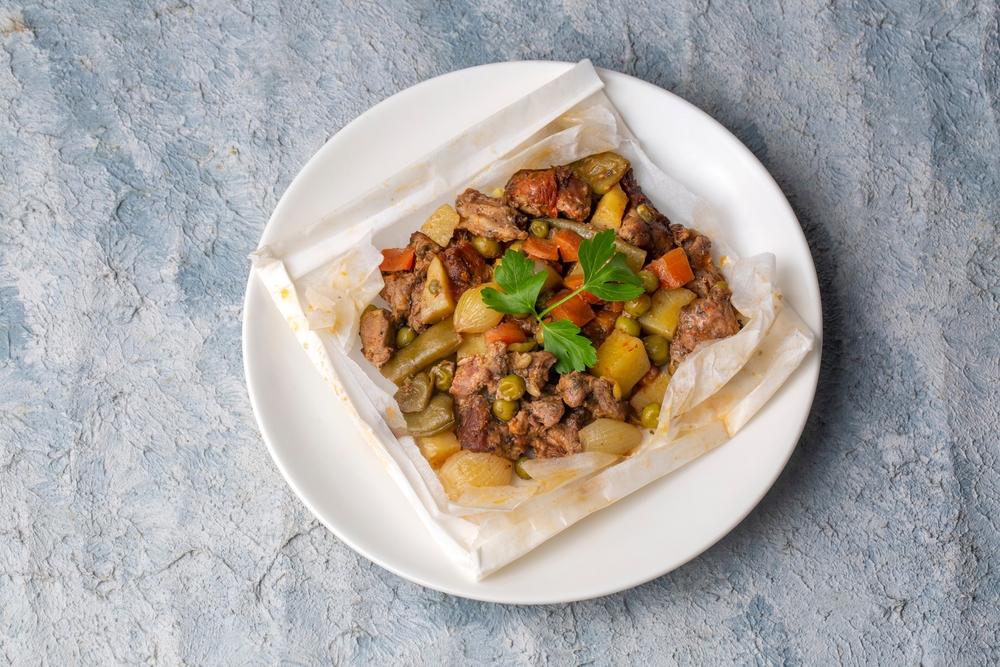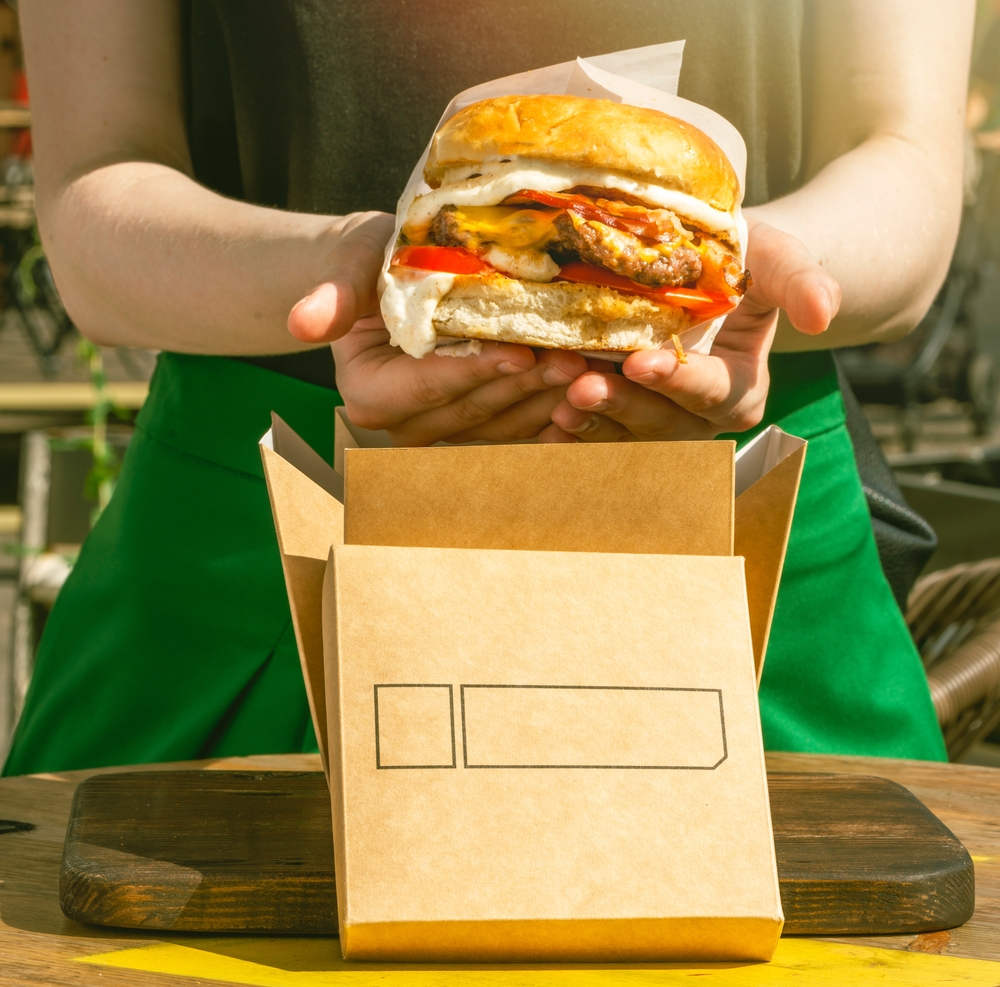Is Greaseproof Paper Food Safe? Everything You Need to Know
By Alysse Phily · 2. July 2024
Worried about whether greaseproof paper is food safe?
The good news is that you can confidently answer this question with a yes.
In this article, we’ll dive into why it’s safe, how it’s made, the regulations it meets, and its many uses in food packaging.
Key Takeaways
- Greaseproof paper is made from tightly bonded paper pulp fibres, providing natural oil and grease resistance without chemical treatments, making it safe for various culinary uses.
- Greaseproof paper must comply with several stringent food safety standards, such as European Regulation (EC) No. 1935/2004 and is often certified by independent laboratories to ensure its safety for food contact.
- Greaseproof paper is environmentally friendly, with many options being compostable and biodegradable, thus offering a sustainable alternative to plastic wraps and reducing single-use plastic waste.
Understanding Greaseproof Paper
 traditional turkish food wrapped in greaseproof paper
traditional turkish food wrapped in greaseproof paper
📜 Greaseproof paper sheets are crafted from 100% paper pulp, undergoing a refining process that tightly bonds the fibres, creating a dense and oil-resistant material.
Unlike parchment paper which is treated with sulphuric acid to enhance its heat resistance and non-stick properties, greaseproof paper remains untreated, relying solely on its tightly-knit fibres to resist oil and grease.
This difference in the manufacturing process sets greaseproof paper apart. By not adding any coatings or treatments, greaseproof paper maintains a natural and straightforward composition.
The tightly bonded fibres provide extensive hydrogen bonds, which contribute to its remarkable oil resistance, making it an ideal choice for various culinary uses.
Answering the question “is greaseproof paper food safe?” requires a comprehension of its composition and properties.
As we move forward, we will explore the stringent standards it must meet and how it effectively prevents contamination, ensuring that the food you consume is safe and fresh.
Food Safety Standards for Greaseproof Paper
The safety of greaseproof paper for food contact is guaranteed by compliance with numerous food safety regulations and standards.
One of the primary standards is the European Regulation (EC) No. 1935/2004, which covers materials and articles intended to come into contact with food.
This regulation ensures that the materials used do not transfer their constituents to food in quantities that could endanger human health.
In addition to European standards, greaseproof paper must comply with recommendations from the German Federal Institute for Risk Assessment (BfR), specifically BfR XXXVI and XXXVI/2, which cater to food contact and baking purposes.
To guarantee compliance, independent laboratories such as ISEGA, FABES, Intertek, and ITC assess and certify greaseproof paper.
These certifications, along with ISO 9001:2015 and BRC Certification based on BRCGS Packaging Materials Issue 6, ensure systematic quality management and legal compliance, providing consumers with safe and reliable products, including the use of food grade inks.
Moreover, the process of ensuring greaseproof paper’s safety involves rigorous testing for potential contaminants and adherence to migration limits set by regulatory bodies.
These tests include evaluations for heavy metals, residual solvents, and other harmful substances that could pose risks if transferred to food.
By undergoing these comprehensive assessments, greaseproof paper manufacturers can affirm the integrity and safety of their products, giving consumers peace of mind.
Furthermore, the ongoing monitoring and periodic re-evaluation of these standards and certifications help maintain high safety levels.
As new scientific data emerges and food safety regulations evolve, greaseproof paper producers must stay updated and compliant, ensuring their products remain safe for food contact.
This continuous improvement cycle is vital in adapting to new challenges and maintaining consumer trust in the safety of greaseproof paper.
How Greaseproof Paper Prevents Contamination
📏 The dense structure of greaseproof paper is its primary defence against contamination. The tightly-knit fibres prevent oils and fats from seeping through, making it resistant to both grease and moisture.
This inherent property makes greaseproof paper an excellent barrier, preserving the quality and safety of food items wrapped within it.
Heat Resistance of Greaseproof Paper
🔥 One of the standout features of greaseproof paper is its heat resistance, making it a favourite in baking and cooking.
Whether you’re baking cookies or roasting vegetables, greaseproof paper serves as a reliable non-stick surface that can withstand the high temperatures of an oven.
Its ability to endure heat without breaking down makes it a versatile tool in any kitchen.
Greaseproof paper in a microwave is unaffected by radiation. However, when using it in frying pans, it’s advisable to make sure the paper fits inside the pan without draping over the edges to prevent fire hazards.
These safety tips help maximise the benefits of greaseproof paper while minimising risks.
Common Uses of Greaseproof Paper in Food Packaging
 © Limepack Greaseproof Paper for packing burger
© Limepack Greaseproof Paper for packing burger
🍔 Greaseproof paper is a versatile player in the realm of food packaging. It is often used to wrap and package oily or greasy food items such as sandwiches, burgers, pastries, and deli items, ensuring that they remain fresh and free from leaks.
Its ability to act as a barrier against moisture and odours makes it indispensable in maintaining the quality of various food products.
In bakeries, cafes, and takeaway establishments, greaseproof paper is commonly used for lining baking trays, wrapping pastries, and presenting bakery items.
Its moderate heat resistance and non-stick properties make it ideal for baking applications, such as lining trays for cookies or wrapping moist food items like quiches and pies.
Additionally, boiling water can be used to clean the greaseproof paper, ensuring a hygienic food preparation process.
Additionally, businesses can leverage custom printed greaseproof paper to enhance their branding.
By incorporating logos, designs, or patterns, companies can:
- Improve brand recognition
- Create a unique customer experience
- Add a professional touch to the food packaging
Make it both functional and aesthetically pleasing.
Environmental Impact of Greaseproof Paper
🌿 Greaseproof paper is a food safe paper. Furthermore, in today’s eco-conscious world, the environmental impact of greaseproof paper is a significant consideration.
Many brands offer compostable options made from 100% virgin pulp, which biodegrade within three to six months.
These options, certified by standards like EN 13432, ensure that the paper can be recovered through composting and biodegradation.
The biodegradable nature of greaseproof paper makes it a favoured option for sustainable packaging, especially for human consumption.
However, contaminated greaseproof paper should be disposed of in the general waste bin to prevent contaminating recyclable materials.
Certifications like ISO 14001:2015 outline environmental management systems that help businesses reduce their environmental footprint.
Moreover, FSC® Certification promotes responsible forest management, linking the production and consumption of forest products responsibly.
By serving as an alternative to plastic wraps and containers, greaseproof paper contributes significantly to reducing single-use plastic waste, aligning with global sustainability goals.
Comparing Greaseproof Paper with Other Wrapping Papers
📄 Greaseproof paper stands out among other wrapping papers due to its unique properties.
While parchment paper is treated with sulphuric acid to enhance its heat resistance and non-stick surface, greaseproof paper remains untreated yet highly resistant to oil and grease.
This makes it suitable for a range of food packaging applications where grease resistance is paramount. Some key features of greaseproof paper include:
- It is resistant to oil and grease
- It has a non-stick surface
- It is heat resistant
- It is suitable for food packaging applications
These properties make greaseproof paper an ideal choice for wrapping greasy or oily foods, and using greaseproof sheets can further enhance this experience, even preventing ink transfer from printed materials.
Wax paper, on the other hand, is coated with a thin layer of wax, providing a moisture barrier but making it unsuitable for oven use.
Unlike greaseproof paper, wax paper cannot withstand high temperatures and should not be exposed to heat. This distinction is crucial for choosing the right paper for different culinary tasks.
Recyclability also varies among these papers. Most greaseproof paper is not recyclable due to its silicone coating, which cannot be processed by recycling machinery.
Recognizing these differences aids in making educated choices about the best wrapping paper for particular needs.
Selecting the Right Greaseproof Paper for Your Needs
 biodegradable recyclable food box and greaseproof paper
biodegradable recyclable food box and greaseproof paper
Several factors need to be considered when selecting the appropriate greaseproof paper.
First, assess if the food item releases oils or moisture during cooking, as greaseproof paper effectively resists these substances.
For versatile uses such as disposable placemats that double as takeaway packaging, larger sheets like 500mm x 335mm are recommended.
For wrapping specific items like hamburgers or lining tables, sizes such as 335mm x 335mm are ideal.
If you need paper for larger tray liners or baskets, opt for 297mm x 210mm sheets. Smaller items like burgers, fries, or toasties can be efficiently wrapped with 160mm x 160mm sheets.
Considering these dimensions and the specific needs of your food items ensures that you select the most suitable greaseproof paper.
This tailored approach not only enhances the functionality of the packaging but also contributes to better food presentation and preservation.
Summary
🌍 Greaseproof paper is a versatile, safe, and environmentally friendly option for food packaging.
Its tightly-knit fibres provide excellent grease resistance, while adherence to stringent food safety standards ensures it is safe for use. Whether you are baking, frying, or packaging, greaseproof paper offers a reliable solution to keep your food fresh and uncontaminated.
Understanding the different types of greaseproof paper and their applications helps in making informed choices that benefit both your culinary practices and the environment.
By opting for compostable and certified options, you contribute to a sustainable future, reducing reliance on single-use plastics and promoting responsible consumption.
Frequently Asked Questions
Is greaseproof paper safe for baking?
Yes, greaseproof paper is safe for baking as it is heat-resistant and provides a non-stick surface, making it suitable for use in the oven.
Can greaseproof paper be used in the microwave?
Yes, greaseproof paper can be used in the microwave as it is unaffected by microwave radiation, making it a safe option for heating food.
How does greaseproof paper prevent contamination?
Greaseproof paper prevents contamination by its dense structure and surface treatments which stop oils and fats from seeping through, reducing the risk of contamination.
Is greaseproof paper environmentally friendly?
Yes, many greaseproof paper options are biodegradable and compostable, making them an eco-friendly choice with certifications promoting responsible forestry and environmental management.
How do I choose the right size of greaseproof paper?
To choose the right size of greaseproof paper, consider the food item’s oil or moisture release and specific packaging needs. Use larger sheets for versatile applications and smaller sheets for wrapping individual items like burgers or fries.

